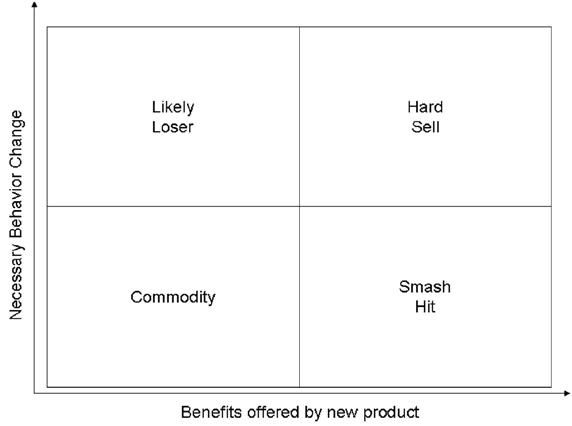These make it difficult to convince them to switch. If we want people to change their behavior to adopt a new product of service, we have to either create new attitudes and beliefs, or change how important problematic attitudes and beliefs are to the behavior.
Effecting this change is tough. A Harvard Business Review article by John Gourville documents how consumers irrationally overvalue the benefits offered by products they use repeatedly. This often leads them to reject products that are objectively superior to the “incumbents” they're already using.
Compounding this problem, the study says that companies tend to irrationally overvalue the benefits offered by the innovation they are introducing (to about the same degree that consumers overvalue the incumbent product), resulting in a huge perception gap.
The size of this gap has a significant effect on how you introduce a new product. A useful way of evaluating new products is to plot the behavior change required against the perceived benefits the new product offers.

Your CMO can help you evaluate the degree of behavioral or attitudinal change your new product require for a target market, and can help you identify cost-effective ways to effect that change. Steve has developed and introduced 21 different products and product lines, and can help figure out what it will take to make your product successful.
